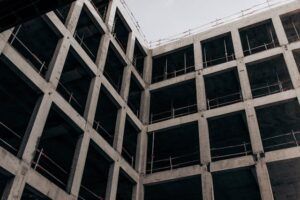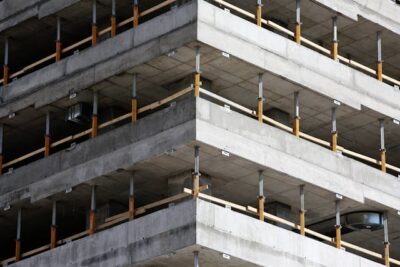Few parts of construction carry as much uncertainty as waiting for concrete to set. Project managers know the stress of staring at a slab, unsure if it is strong enough to move forward. Those delays often ripple through a schedule, creating extra costs and headaches.
This is where technology has begun to step in. Tools like Converge smart concrete sensors show how wireless monitoring can turn a traditionally slow and uncertain process into one guided by real-time data. Instead of relying on a gut feel or waiting longer than necessary, contractors are now leaning on insights that keep schedules tight without risking safety.
The Hidden Costs of Guesswork
Concrete curing is one of those phases where the stakes are high but the signals are hard to read. If formwork is removed too soon, structural integrity is at risk. If it stays in place longer than necessary, time and money are wasted. Many teams fall back on conservative estimates, choosing caution over efficiency.
That approach makes sense for safety but it stretches budgets and slows progress. On complex commercial builds, where multiple trades rely on precise handovers, even a single miscalculation in curing time can push an entire timeline out of sync. Wireless monitoring provides a way to close that gap.
What Wireless Monitoring Brings to the Table
Wireless concrete sensors are small, embedded devices that track temperature and strength inside a pour. Instead of waiting days for lab tests or relying on general charts, crews can open a dashboard and see live readings.
For commercial projects, this shift means:
- Clearer scheduling decisions – Managers know the exact moment a slab reaches target strength.
- Reduced downtime – Formwork cycles can move faster without sacrificing safety.
- Consistent quality – Teams can spot uneven curing or thermal cracking risks early.
By removing the blind spots, wireless monitoring makes curing less of a bottleneck and more of a predictable step in the build.
Cutting Down on Delays
In construction, time saved often equals money saved. Waiting two extra days for concrete to cure might seem small, but when multiplied across dozens of pours, the impact is significant. Wireless monitoring lets teams trim those extra days without risk.
Consider a high-rise project where each floor depends on the previous one reaching strength. If every cycle is shortened even slightly, the overall schedule tightens by weeks. That difference not only cuts costs but also frees up crews and equipment for other parts of the job.
Supporting Safer Sites
Safety remains the top priority on any site. Wireless sensors don’t change that—they reinforce it. By confirming when concrete is genuinely ready, they remove the temptation to gamble on early formwork removal. At the same time, they reduce the fatigue that comes with unnecessary waiting.
Crews can act with confidence, knowing the data backs up their decisions. This mix of efficiency and assurance is why more commercial builders are exploring wireless solutions as a standard practice.
The Sustainability Angle
Faster schedules aren’t the only benefit. Smart monitoring also supports sustainability goals. When data shows the true performance of a mix, teams can experiment with using less cement or incorporating recycled materials. That reduces the carbon footprint without compromising safety.
This kind of fine-tuned mix design is only possible when real-time feedback is available. Wireless sensors turn sustainability from an abstract goal into a practical, measurable step in everyday construction.
Changing the Role of the Project Manager
For project managers, wireless monitoring is more than just a tool—it’s a shift in workflow. Instead of spending hours coordinating testing, following up on lab results, or adjusting schedules on guesswork, managers can rely on precise updates.
That clarity frees them to focus on other parts of the project: coordinating trades, handling client communication, and ensuring safety compliance. With better information, their decisions carry more weight and fewer risks.
Looking Ahead
The adoption of wireless monitoring in concrete curing is still growing, but momentum is clear. As more contractors see the savings in time, cost, and safety, demand will spread across sectors. What was once a niche innovation is fast becoming part of the commercial builder’s toolkit.
The real power lies in how these tools blend into existing processes. They don’t replace expertise or the need for skilled judgment. Instead, they strengthen it, giving professionals clearer insights and more confidence in their calls.

Conclusion
Concrete curing will never be glamorous, but it is one of the most critical phases in a build. By bringing clarity to this hidden workflow, wireless monitoring is reshaping how commercial projects are planned and delivered. The industry is learning that a small sensor can unlock major gains in efficiency, safety, and sustainability.
For builders, it’s no longer about waiting and hoping—it’s about knowing and acting. That shift may seem quiet, but it’s already changing the pace of commercial construction in lasting ways.












